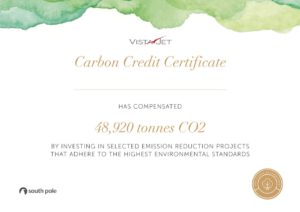How to Trade Carbon Credit Stocks
Trade Carbon Credit Stocks
One way to invest in carbon credit stocks is through a carbon ETF (exchange-traded fund). These funds track the performance of a basket of companies involved in generating, trading or managing carbon credits. They are the most accessible entry point for retail investors. However, investors can also gain exposure to carbon credits by buying shares in individual companies that buy or sell them or by trading carbon-credit futures.
Essentially, a trade carbon credits is a permit to emit greenhouse gases. It’s usually defined as the equivalent of one metric ton of CO2. Corporations that produce more emissions than their permits allow them purchase carbon credits to offset their excess emissions. For example, a manufacturing company that emits 11 tons of carbon dioxide from its plant and fleet of delivery vehicles can offset those emissions by purchasing carbon credits on the global market.

Carbon credits can be generated from a variety of projects, but they all must be independently verified by a third party to ensure their integrity and quality. The most common sources of carbon credits are industrial projects, which generally produce large volumes of verified emission reductions or avoided emissions. Projects can also be community-based, where they are designed and managed by local groups or NGOs. These projects tend to produce lower volumes of credits and can be more expensive to certify, but they typically generate additional social benefits that meet the UN’s Sustainable Development Goals (SDGs).
How to Trade Carbon Credit Stocks
The other main source of carbon credit supply is from nature-based projects that reduce or remove greenhouse gases in forests, wetlands and other natural landscapes. These projects are often more difficult to finance, since they can take a long time to mature and produce credits for sale. However, a number of countries are ramping up their carbon-reduction programs to increase the potential supply of nature-based carbon credits.
Currently, the vast majority of verified emission reductions (VERs) on the voluntary market come from these types of projects. These VERs are traded on the CTX Exchange, where a significant portion of all trades on the global carbon market occur. The CTX Exchange primarily specializes in bringing buyers and sellers together in the voluntary carbon market and facilitates a wide range of transaction sizes and types, from small reseller brokers to large corporations buying direct.
In 2021, record-breaking price runs in both the compliance and voluntary markets pushed many carbon-credit-related stocks to very high valuations. Since then, a softening of carbon prices combined with a resurgence of interest in SDG-aligned investments have brought most of these stocks back to more reasonable levels.
Investors looking to trade carbon-credit stocks can find a handful of options through the major stock exchanges and popular investment apps. Investors can choose from an ETF that follows the global carbon-credit market or single-country ETFs for Europe, California and elsewhere. Alternatively, they can buy carbon-credit futures through their favorite exchange or online broker. These positions are not appropriate for everyone, so investors should consider their individual goals and risk tolerance before committing any capital.